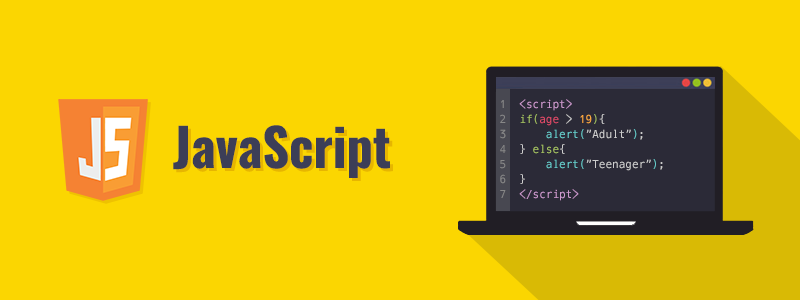Understand and Learn JavaScript

In this section, you will learn JavaScript. JavaScript is a programming language that allows you to implement complex things on web pages. Every time a web page does more than just sit there and display static information for you to look at — displaying timely content updates, or interactive maps, or animated 2D/3D graphics, or scrolling video jukeboxes, etc. Consequently, you can bet that JavaScript is probably involved. It is the third layer of the layer cake of standard web technologies, two of which (HTML and CSS).
Why Learn JavaScript?
- Firstly, all browsers process JavaScript.
- Secondly, many web services rely on JavaScript in the browser.
- Subsequently, you can use it in your own web pages.
- After this, you can understand what other web pages are doing.
- Moreover, this is easy to start.
- In addition, it is easy to do useful things.
- Lastly, programming ideas carry over into other languages.
Using Variables, Objects and Arrays
var str = “Hello”; // local variable, when inside a function
str2 = “Hello World”; // global variable in default context (window.str2)
str3 = ‘My quote char: ” ‘; // single or double quote
str4 = “My really really really \
really long string broken into \
multiple lines”;
str = 19; // change to int
str = 0xfe + 2.343 + 2.5e3; // hex, floats, exp
var newObject = new Object(); // constructor
newObject = {}; // shorthand for same
newObject.name = “bob” // dynamic attributes
newObject.name = null // it’s there (null item)
delete newObject.name // it’s gone (undefined)
newObject[“real age”] = 33; // array notation/hash table
var obj = { // create object using JSON
name: “Bob”, // aka JavaScript Object Notation
details: {
age: 33,
“favorite color”: “green”
}
}
obj.name
obj.details[“favorite color”]
var newArray = []; // no size
newArray[3] = “hi”; // grows dynamically
newArray[2] = 13; // any type
newArray.push(newObject); // add new item
newArray.pop(); // remove it
Comparisons and Manipulations
JavaScript has some funky types and comparisons.
/* javascript types */
typeof(“string”) == “string”
typeof(3) == typeof(3.4) == typeof(0x34) == “number”
typeof(myObject) == typeof(myArray) == “object” // arrays are objects
typeof(true) == typeof(1 == 2) == “boolean”
typeof(Math.sin) == “function”
typeof(notthere) == “undefined”
/* comparisons */
123 == “123” // true => converts type
123 === “123” // false => checks type
typeof(x) == “undefined” // x isn’t there
x == null // x is defined, but null
/* Numbers */
parseInt(“123”) // base 10 => 123
parseInt(“123”, 16); // base 16 => 291
parseFloat(“123.43”); // 123.43
isNaN(0/0) == true // illegal number
3/0 == Infinity // legal…
-3/0 == -Infinity //
isFinite(3/0) == false // … but not finite
/* regular expression (regex) string comparisons */
matches = “hello”.match(/h../) // returns array [“hel”] or null
re = new RegExp(“h..”, “ig”); // construct regexp — no slashes
matches = “hello”.match(re); // use it
“hello”.replace(/h/,”b”) // => “bello”
Conditionals and Loops
if (str == “Hello”){ // if-else
alert(“Hi”); // popup dialog
}
else{
alert(“something is wrong!”);
}
a = 3, b = 4; // multi-assigment
c = a > b ? a : b; // c gets bigger item (b)
switch (name){ // switch statement
case “Bob”:
alert(“Hi Bob!”)
break
case “Joe”:
alert(“Hey Joe.”)
break
default: alert(“Do I know you?”)
}
while (i < n){ // the basics
// do something
i++;
}
for (var i=0; i<n; i++){
// do something else
}
for (var key in obj){
// do something with obj[key]
}
Defining Functions
function foo(a,b){ // global function
return a + b;
}
var fn = function(a,b){ // save function as variable…
return foo(a,b);
}
obj.fn = function(a,b){ // …or as part of object
return a + b;
}
function bar(a,b){
var n = 1; // local var
function helper(x) { // inner function…
return 1/Math.sqrt(x + n); // .. can use local vars
}
return helper(input); // avoid need for global function
}
foo(1,2) == fn(1,2) == 3; // true
Browser Document Object Model (DOM), and GUI
Find and change HTML elements.
alert(“message”); // messagebox with “OK”
var choice = confirm(“message”); // OK/CANCEL true or false
var input = prompt(“message”, “default value”); // enter a value; null if cancelled
x = document.getElementById(“foo”); // finds <div id=”foo”></div>
x.style.background = “#333”; // set CSS style
x.style.borderLeft = “1px solid #ccc”; // border-left => borderLeft (camelCase)
x.className = “myclass”; // set CSS class
x.innerHTML = “Hello”; // set html inside div
y = document.getElementById(“myinput”); // input area/textarea
y.value = “Hi”; // get or set text
A great career is just a certification away. So, practice and validate your skills to become Certified SoapUI Testing Professional

